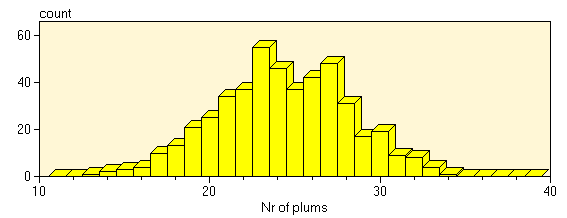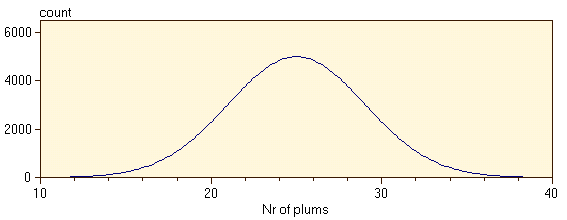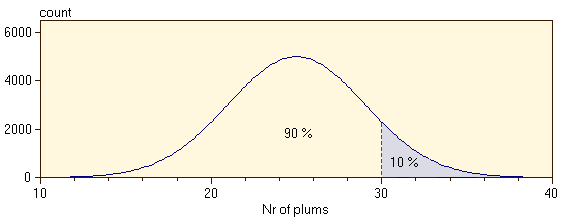 You are working with the text-only light edition of "H.Lohninger: Teach/Me Data Analysis, Springer-Verlag, Berlin-New York-Tokyo, 1999. ISBN 3-540-14743-8". Click here for further information.
You are working with the text-only light edition of "H.Lohninger: Teach/Me Data Analysis, Springer-Verlag, Berlin-New York-Tokyo, 1999. ISBN 3-540-14743-8". Click here for further information.
 You are working with the text-only light edition of "H.Lohninger: Teach/Me Data Analysis, Springer-Verlag, Berlin-New York-Tokyo, 1999. ISBN 3-540-14743-8". Click here for further information. You are working with the text-only light edition of "H.Lohninger: Teach/Me Data Analysis, Springer-Verlag, Berlin-New York-Tokyo, 1999. ISBN 3-540-14743-8". Click here for further information.
|
Table of Contents  Univariate Data Univariate Data  Distributions Distributions  Introduction Introduction |
|
| See also: variability, Fractiles, Central Limit Theorem |   |
If you take subsequent samples from the same random process you will get different results. The mean of these results and its spread are usually a good indicator of the process being sampled. A short example should clarify this:
Before looking into a statistics textbook you may want to perform an
experiment yourself. Click on the ![]() to start the experiment !
to start the experiment !
What you see is, that the actual number of plums in a third of the cake varies around 25. The histogram of the frequency of occurrence of different numbers of plums may look like this:

If you repeat the process of plum cake baking often enough, and you plot the histogram bars small enough you will eventually obtain a smooth distribution:

Next, our physicist wants to know how what the chances are of finding
more than 30 plums in the slice of the plum cake. One of the fundamental
properties of distribution diagrams is that the relative area between two
values on the x-axis reflect the chances that the corresponding event will
occur. In our example the physicist may draw a vertical line at 30 plums.
The relative area above this mark indicates the chance of finding more
than 30 plums in the slice of cake (which is roughly 10 %, according to
the distribution curve shown below).

Sometimes it may be inconvenient to determine the relative area. This complication can be avoided by scaling the distribution curve such that it has an area of exactly 1.0. When doing so, any area below the curve reflects the chances that an event may fall into that area. This curve is called the probability density function (pdf):

Hint: Do not confuse the scaling
of the area with the scaling of the y-axis. A distribution curve scaled
to an area of 1.0 does not have a maximum of 1.0; see also the ![]() for
further explanation
for
further explanation
Last Update: 2006-Jšn-17